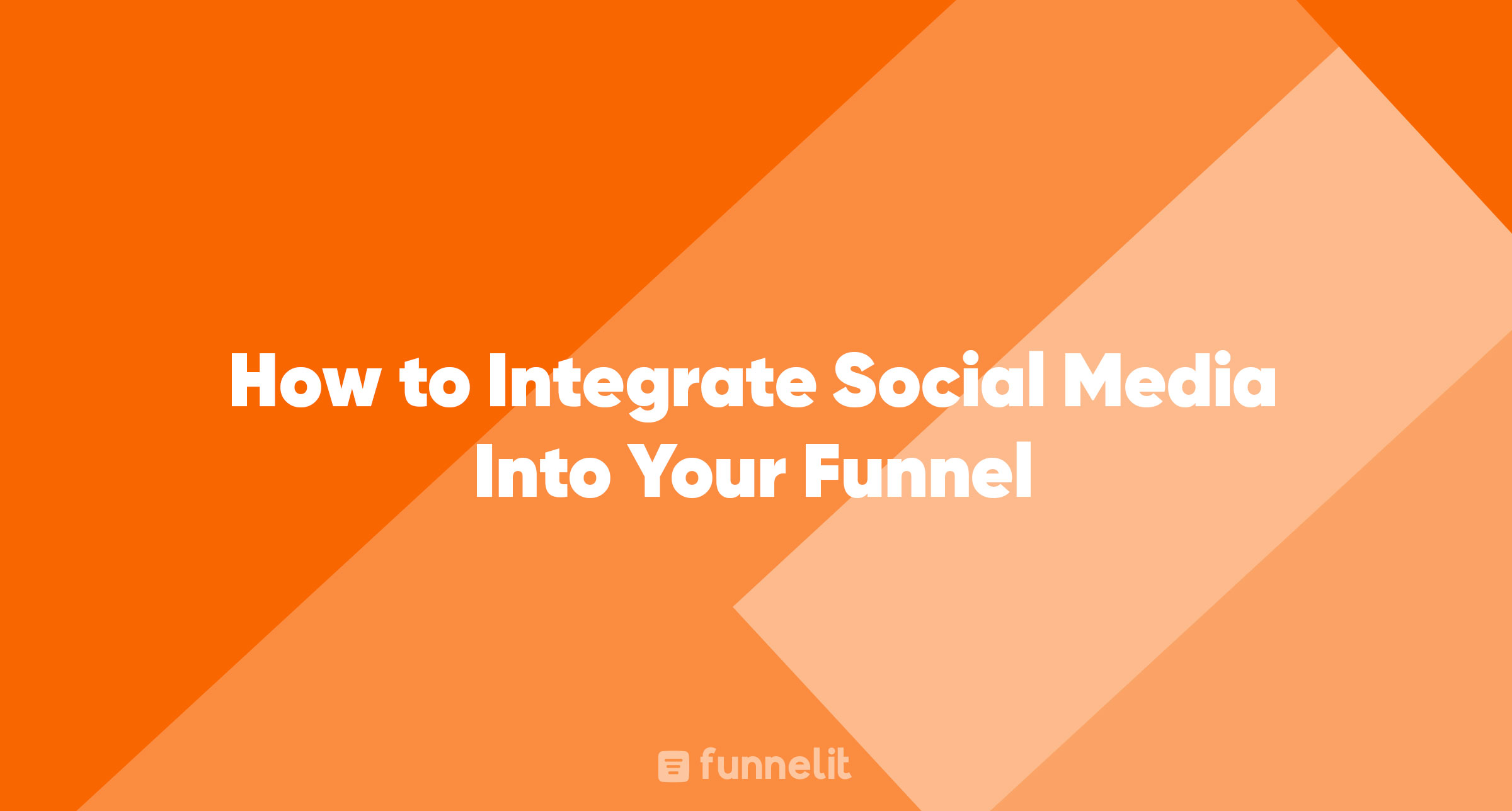How does your brand ensure that potential customers who have just stumbled upon your brand's social media presence transform into loyal customers who advocate for your products or services? The answer lies in creating and optimizing a social media funnel.
This article will guide you through the process of integrating social media into your marketing funnel, establishing a strong online presence, and leveraging it effectively to yield tangible business outcomes. We'll delve into the different stages of the social media funnel and provide actionable strategies to navigate each of them. Let's get started.
Understanding the Social Media Funnel
The social media funnel is a visual representation of the customer journey from their first interaction with your brand on social media to their conversion into loyal customers and brand advocates.
The funnel is a multi-layered structure that begins by attracting a broad audience at the top (awareness stage) and gradually narrows down to a smaller group of interested and engaged customers as they progress towards the bottom (advocacy stage).
The social media funnel encapsulates the following stages:
- Awareness: This stage involves attracting a wide audience and making them aware of your brand's products or services.
- Consideration: At this stage, your goal is to stand out from the competition and make your brand memorable to the audience.
- Conversion: This phase involves compelling the audience to take action, such as making a purchase or signing up for a newsletter.
- Engagement: This stage focuses on maintaining a relationship with your audience after the initial purchase, ensuring your brand remains in their minds.
- Advocacy: The final stage involves nurturing trust among your audience to the point where they become brand advocates, recommending your brand to others.
With an understanding of what a social media funnel is, let's delve into the importance of this structure in your marketing strategy.
Why is a Social Media Funnel Crucial for Your Brand?
The modern consumer spends a significant amount of time on social media platforms daily. With billions of users worldwide, social media offers a unique opportunity for brands to reach a broad audience and convert them into paying customers.
A well-structured social media funnel allows your brand to:
- Boost Brand Awareness: By sharing engaging content on social media, your brand can reach a wide audience, increasing its visibility and recognition.
- Target Audiences Effectively: Understanding the different stages of the funnel allows your brand to deliver the right content to the right audience at the right time, improving engagement and conversions.
- Cultivate Customer Loyalty: By maintaining engagement after the initial purchase, your brand can foster strong relationships with customers, turning them into loyal advocates for your brand.
Now that we understand the importance of a social media funnel, let's delve into the strategies you can implement at each stage of the funnel.
Strategies to Optimize Each Stage of the Social Media Funnel
1. Awareness Stage
At this stage, your goal is to attract a broad audience and make them aware of your brand. To achieve this, you need to create high-quality, informational content that resonates with your target audience.
Content types you can leverage at this stage include blog posts, infographics, brand videos, and social media posts. Ensure that your content addresses the challenges and needs of your target audience, offering them valuable solutions.
For example, if you offer email marketing services, your content could focus on topics like how to implement email marketing for the first time, creating a successful drip campaign, or setting up automation.
2. Consideration Stage
At the consideration stage, your audience is aware of your brand and is considering whether to engage with your products or services. Here, your content should focus on showcasing your brand's unique value proposition and why your audience should choose your brand over competitors.
Consider using content formats like case studies, webinars, and customer testimonials to provide deeper insights into your brand and products. These types of content can help build trust and credibility among your audience, nudging them closer to conversion.
3. Conversion Stage
At the conversion stage, your audience is ready to take action, such as making a purchase or signing up for your newsletter. Your content should focus on compelling your audience to take this action.
Consider offering purchase incentives like discounts, free trials, or bonuses to encourage conversion. Also, leverage social proof like customer testimonials and reviews to build trust and confidence in your products or services.
4. Engagement Stage
Post-purchase engagement is crucial for maintaining a strong relationship with your customers and ensuring they remain loyal to your brand. Your content should focus on providing value to your customers and making them feel part of your brand community.
Consider using strategies like hashtag campaigns to encourage user-generated content or hosting webinars and Q&A sessions to maintain engagement with your audience.
5. Advocacy Stage
The final stage of the social media funnel involves turning your customers into brand advocates. Encourage your customers to share their experiences with your brand and offer incentives for referrals.
Continued engagement and providing high-quality customer service can help nurture your customers into brand advocates who willingly promote your brand to their networks.
Final Thoughts
Incorporating social media into your marketing funnel is a strategic approach that can significantly boost your brand's online visibility, engagement, and conversions. By understanding and optimizing each stage of the social media funnel, you can effectively guide your audience from initial brand awareness to loyal advocacy.
Remember, the key to a successful social media funnel lies in creating high-quality, relevant content that resonates with your audience at each stage of their journey. With the right strategy and consistent effort, your brand can leverage the power of social media to drive growth and success.
